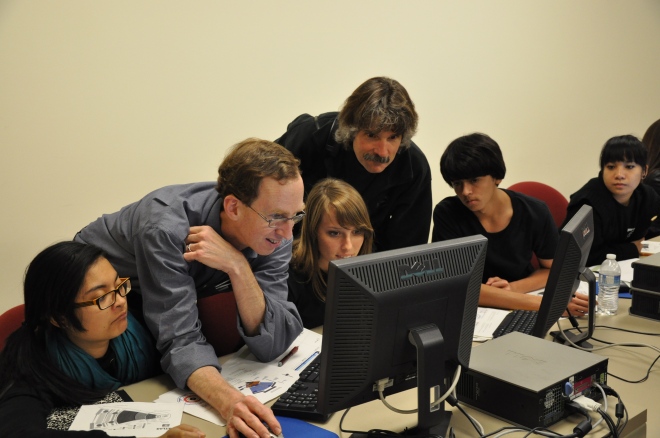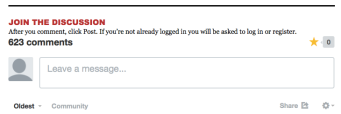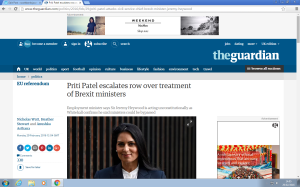The vital ways to make sure your articles are seen by the most people possible
Writing a good article alone isn’t good enough anymore. In this theory post I will explore the best ways to ensure people are reading what you produce.

The modern journalist has access to the largest audience than ever before, both numerically as well as proportionally; more people than ever have access to the news. Due to this news has got to be more inclusive in order to make sure it is accessible to the widest audience and increase its relevance.
Making a story accessible is terms of how its written is down to the tone of the piece. Using the correct tone can make a story available to a wider audience by making it relevant to them or it can target a specific audience in particular.
The modern journalist faces competition everywhere, the amount of rival content is staggering. Every consumer now has the ability to be a producer of content and can have a direct influence on the content, a good example of this being comment sections.
 A comment section allows for every reader to potentially join in the discussion of the story. This causes a dialogue between users and gives them the ability to share their own views on the topic. It is not uncommon for some comments to far exceed the length of the original article and for a reader to learn even more from just comments alone. A comment section helps to keep the attention of a reader, which is vital due to the lower attention spans of the modern audience.
A comment section allows for every reader to potentially join in the discussion of the story. This causes a dialogue between users and gives them the ability to share their own views on the topic. It is not uncommon for some comments to far exceed the length of the original article and for a reader to learn even more from just comments alone. A comment section helps to keep the attention of a reader, which is vital due to the lower attention spans of the modern audience.
In order to counteract this lower attention span a page must be as engaging and visual as possible to draw readers in and keep them interested once they’re drawn in. Readers expect interactivity and text alone can’t retain a user’s attention. A layout must combine practicality and usability – there is no point having a good looking page if it is difficult to navigate and hard to understand.
One of the most important aspects of an article is to create something that is easily shareable and encourage this from its readers. Having this ability to spread content allows for free advertisement and allows for multi platform access – meaning it can be seen on Facebook, Twitter and other social media platforms. This way it can redirect traffic to the article in question and works off the basic principle that the more people that see the link the more people are likely to click it. The internet is all purely based on numbers and statistics and using these to your advantage gives you the best chance at having your content seen by a larger audience.
It is important for a piece to immediately start gaining traction and snowball before it becomes buried under other articles and loses priority on Facebook and Twitter feeds. The sooner something begins this process of sharing and generating traffic the better.

All of this feeds into the idea of a link economy – this idea that the value of a piece increases with the amount of links to it and its outward links to other pieces. This is based on the concept of if you link to several other pages, then several pages will link back to your article. This feeds in again to making something simple and usable, and allows audiences to find it easily. The internet is built on this basis, wit one page linking to others which all link outwardly again and so on.
One of the most vital parts of gaining traffic is Search Engine Optimisation (SEO) in order to make your content show up in a search engine. This is done through understanding and playing into the algorithms used by the use of key words, tags and links and shares to help raise the relevance of your piece in the search engine rankings. It is therefore vital to optimise all content created for being searched for.
“SEO is the practise of improving and promoting a website to increase the number of visitors the site received from search engines. There are many aspects to SEO, from the words on your page to the way other sites ink to you on the web. Sometimes SEO is simply a matter of making sure your site is structured in a way that search engines understand” – The beginners Guide to SEO by Rand Fishkin
Therefore from this we can outline a basic set of rules that a writer can follow in order to have their work exposed to the largest possible audience.
- Make sure every article caries easy share buttons to at least Facebook and Twitter
- Exhibit multimedia skillset in the layout
- Embed relevant video and audio
- Use relevant images and info graphics
- Provide further links at the bottom of the page
- Embed hyper links throughout the piece
By following these rules you make your piece as visually stimulating and easily shareable.
The last thing to consider is the reading patterns of those reading the article. This way you can layout your piece accordingly in order to draw attention. Reading patterns are vital for understanding of anyone who wishes to increase audience retention. This goes off the basis of a simple F layout.
![]()
Readers begin with a horizontal movement usually across the top area of the content. This should be taken advantage of by putting something visual or attention grabbing in this area, making sure any text there is engaging (a good starting 25 words for example). This initially creates the top of the F shape.
Te next movement the user will usually do is down the page partially and then across again in a second movement to the right, usually covering a smaller area than before. This forms the second bar of the F shape.
Finally the user will scan down the left side of any content in a vertical movement – which is often slow and systematic creating the solid stripe on the heatmaps shown above. This creates the stem of the F shape.
Users spend 80% of their time on a webpage looking at the information above the page fold without even scrolling. The other 20% of their attention is given to any information below the page fold. Therefore it is important to layout a piece that conforms to this by gaining the attention of the reader before they start scrolling in order to gain as much of their attention and encourage them to share before they begin to scroll.
As shown on the heatmap users spend the majority of their time (69%) focusing on the left side of the page and only 30% on the right. Therefore phrases and words that are more eye catching and interesting should try to be shown on the left of the page and have the visual layout with the emphasis on the left. Therefore considering this a layout should focus on the top and left of the web page as the most vital parts.
A good example of this form of layout is that of the BBC news site. As you can clearly see it  grabs the attention of the reader from the first visit. The page you are presented with has a bold attention grabbing header followed by an interactive element in the form of the video. This clearly plays into the idea of the F heat map shown above. To the right are sections which link to other stories and another section half cut off to encourage scrolling.
grabs the attention of the reader from the first visit. The page you are presented with has a bold attention grabbing header followed by an interactive element in the form of the video. This clearly plays into the idea of the F heat map shown above. To the right are sections which link to other stories and another section half cut off to encourage scrolling.
The article breaks up the text regularly with images and video content and then encourages sharing at the bottom of the page. The article is shown as a column in order to encourage scrolling and has an entire section just dedication to other links for further reading relating to the story.
The page you are presented with on The Independent’s page is a lot less interactive to  begin with, there is not embedded video or audio. However, it does still follow the F rule fairly well. Although there is a lot less to grab your attention initially before the viewer has to scroll. However they do encourage sharing at the top and bottom of the article which is something the BBC does not. And again has a section which encourages further reading. The story is also a lot shorter and plays more into the idea of shorter attention spans. As well as this it promotes other stories on its webpage further down the page, however, does not immediately catch attention and I personally didn’t notice it on my first visit.
begin with, there is not embedded video or audio. However, it does still follow the F rule fairly well. Although there is a lot less to grab your attention initially before the viewer has to scroll. However they do encourage sharing at the top and bottom of the article which is something the BBC does not. And again has a section which encourages further reading. The story is also a lot shorter and plays more into the idea of shorter attention spans. As well as this it promotes other stories on its webpage further down the page, however, does not immediately catch attention and I personally didn’t notice it on my first visit.
The guardian also does a good job of presenting itself online with its initial part of the  page. It shows a good example of the opening sentence to gain attention and asks a question without actually posing a question to encourage people to scroll. Again it encourages sharing however there is very little interactivity and does not break up the text at all once you scroll.
page. It shows a good example of the opening sentence to gain attention and asks a question without actually posing a question to encourage people to scroll. Again it encourages sharing however there is very little interactivity and does not break up the text at all once you scroll.
LEASA MERRILL: You have researched and clearly understand the importance of interactivity within journalism. Your written analysis is very thorough and interesting too. This will hold you in good stead for when you produce your final product.
LikeLiked by 2 people
[…] Theory Post: SEO and Designing Web Content […]
LikeLike